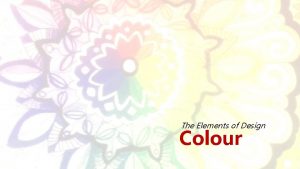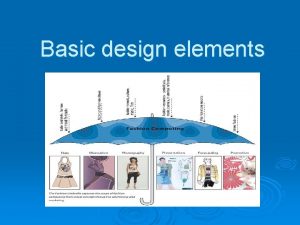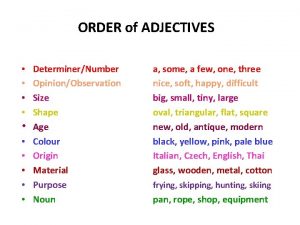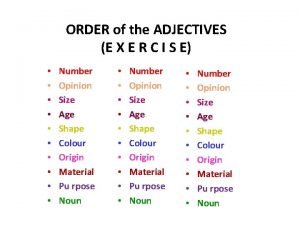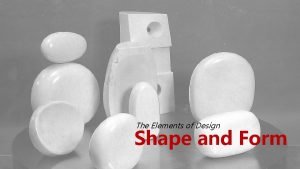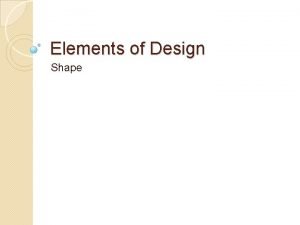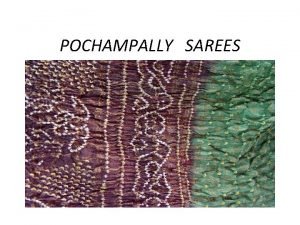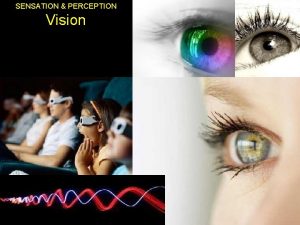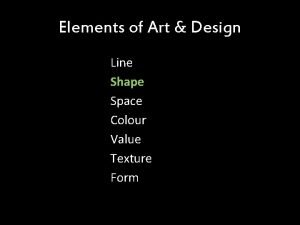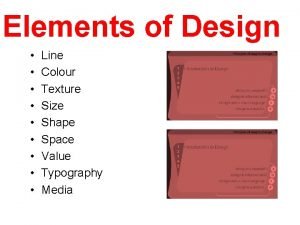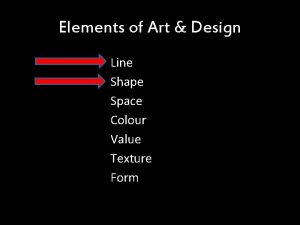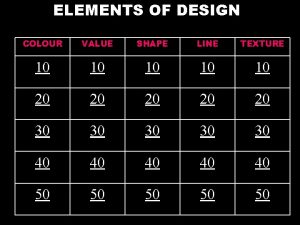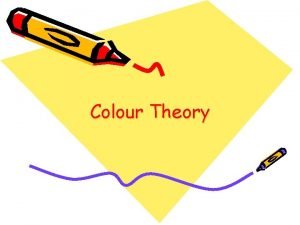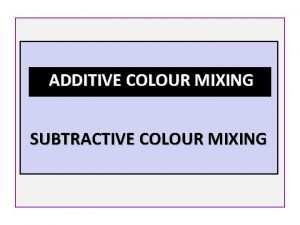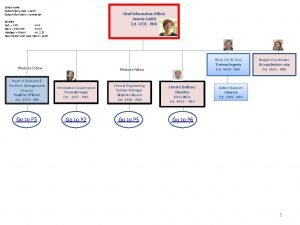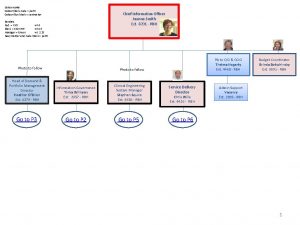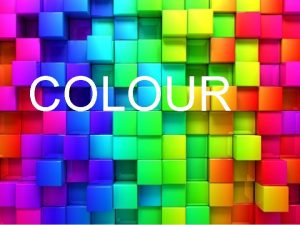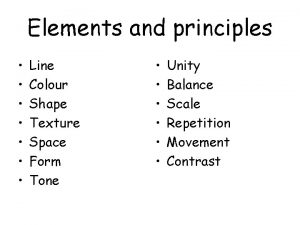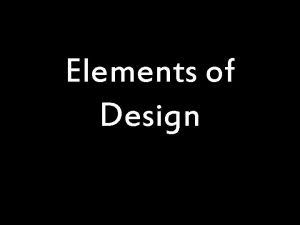The Elements of Design Elements Line shape colour















- Slides: 15

The Elements of Design Elements: Line, shape, colour, texture, value, & depth.

Line can be 2 D, 3 D or implied (edge of a shape) Ends do not meet

Shape Enclosed space Ends meet 2 D Can be organic or geometric

Colour The way primary and secondary colours blend and form together

Texture Tactile or visual (touch or look) Texture is the quality of the surface

Value Lightness or darkness Can give illusion of depth

Depth (space) Looks 3 D Space can be positive or negative (positive is the main part of the picture, negative is the space around)

The Principles of Design Principals: Movement, repetition, rhythm, unity, contracts, emphasis, & balance.

Movement Moves viewer’s eyes through the art The elements used in this principle would be depth and line. The lines in these photos create the look of depth and carry your eyes through the pictures.

Repetition (pattern) Repetition of lines or shapes Like wallpaper The elements within this principle would be line and shape. Lines are repeated as well as shapes to create repeating patterns.

Rhythm Elements repeated but not a pattern Elements within this principle would be line and colour. The lines form in repeating ways but aren’t identical everytime. Also, colour is used for a sense of togetherness and shows some depth.

Unity (harmony) All elements working together Makes work feel complete Line, colour, and rhythm are all shown in this example. The bright and dull colours catch your attention, while the swirls in the back are a sense of rhythm using line (and colour). All of these working together unify the art piece.

Contrast is shown by opposites (opposite colours, textures etc. ) Elements in this principle can be colour, texture or shape. In this example is colour. The black and white together show a striking difference to the eye.

Emphasis is when the attention of the art is taken to a certain area within the piece. Colour and space/depth are used in this example. The fall, orange colour draws your attention (creatingh emphasis to the tree), while the background is negative space and is grayed out.

Balance can be symmetrical Balance can be asymmetrical Balance can be radial Balance can be in rule of thirds
 Elements of design colour
Elements of design colour Design elements colour
Design elements colour Size shape age color
Size shape age color Number-opinion-size-age-shape
Number-opinion-size-age-shape Elements of design form
Elements of design form Elements of design shape
Elements of design shape What is representative fraction
What is representative fraction Aerofoil shapes
Aerofoil shapes Shape matching and object recognition using shape contexts
Shape matching and object recognition using shape contexts Bolongie
Bolongie Central line colour coding
Central line colour coding Where is the most reactive elements on the periodic table
Where is the most reactive elements on the periodic table List out the steps involved in making of pochampalli saree
List out the steps involved in making of pochampalli saree Sensation
Sensation Interior design lecture notes+ppt
Interior design lecture notes+ppt Hình ảnh bộ gõ cơ thể búng tay
Hình ảnh bộ gõ cơ thể búng tay
